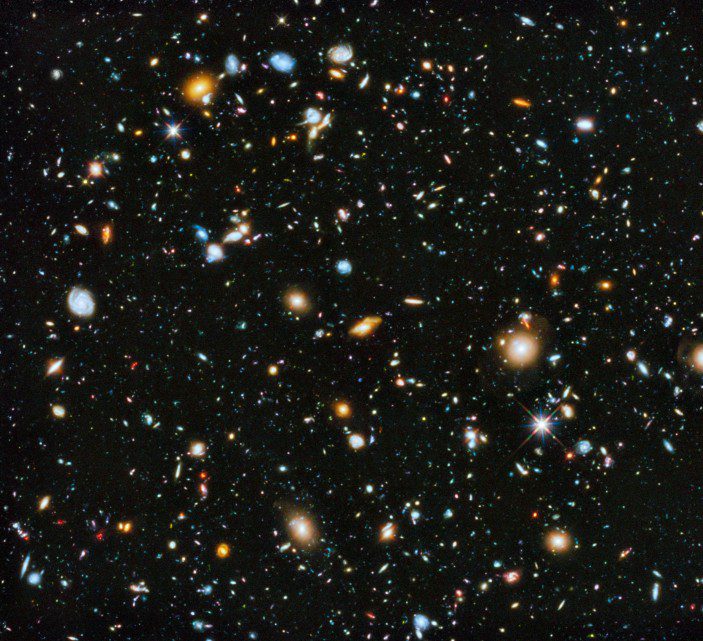The Hubble Space Telescope has been orbiting Earth since 1990, providing astronomers and space enthusiasts with mesmerizing images of the universe. The images captured by Hubble offer a closer look at planets, stars, galaxies, and other celestial bodies. This article features ten of the most incredible images captured by the Hubble Telescope that reveal the beauty and mystery of our universe. From the swirling clouds of gas and dust in the Crab Nebula to the vibrant colors and intricate details of the Butterfly Nebula, these images showcase the wonder of the cosmos and the importance of continued exploration and discovery.
10 Amazing Images Captured by Hubble Telescope
The Hubble Space Telescope, launched in 1990, has provided us with stunning and fascinating images of our universe. With its advanced technology and powerful lenses, it has enabled astronomers to study the planets, stars, galaxies, and other celestial objects in great detail. Here are ten incredible images captured by the Hubble Telescope that showcase the beauty and wonder of our universe.
1. The Crab Nebula
The Crab Nebula, also known as M1, is a supernova remnant located in the constellation Taurus. This image captured by the Hubble Telescope shows the swirling clouds of gas and dust formed by the supernova explosion that occurred in 1054. The bright central region is a pulsar, a rapidly rotating neutron star that emits intense radio waves and gamma rays.
2. The Orion Nebula
One of the most famous and easily recognizable objects in the night sky, the Orion Nebula is a vast cloud of gas and dust where new stars are born. This beautiful image taken by the Hubble Telescope reveals the intricate details of the nebula, including the bright blue-white stars surrounded by colorful gas clouds and dark dust lanes.
3. The Sombrero Galaxy
The Sombrero Galaxy, also known as M104, is a massive spiral galaxy with a prominent dust lane that gives it the appearance of a sombrero. This image captured by the Hubble Telescope shows the galaxy’s halo, disk, and bulge, as well as the numerous globular clusters that orbit around it.
4. The Pillars of Creation
The Pillars of Creation are towering columns of gas and dust located in the Eagle Nebula, about 7,000 light-years away from Earth. This iconic image taken by the Hubble Telescope reveals the intricate structure and beauty of these pillars, which are being sculpted by the intense radiation and winds from nearby massive stars.
5. The Whirlpool Galaxy
The Whirlpool Galaxy, also known as M51, is a spiral galaxy located about 23 million light-years away from Earth. This image captured by the Hubble Telescope shows the galaxy’s intricate spiral arms and the bright knots of star formation triggered by gravitational interactions with its companion galaxy.
6. The Ring Nebula
The Ring Nebula, also known as M57, is a planetary nebula located in the constellation Lyra. This image taken by the Hubble Telescope shows the spherical cloud of gas and dust surrounding a dying star, which has shed its outer layers and exposed its hot, glowing core.
7. The Carina Nebula
The Carina Nebula is a vast cloud of gas and dust located in the southern constellation Carina. This image captured by the Hubble Telescope shows the complex structure and vivid colors of the nebula, as well as the numerous young stars and star clusters embedded within it.
8. The Cat’s Eye Nebula
The Cat’s Eye Nebula, also known as NGC 6543, is a planetary nebula located in the constellation Draco. This image taken by the Hubble Telescope shows the intricate structure and glowing gas clouds of the nebula, which are being shaped by the dying star at its center.
9. The Eagle Nebula
The Eagle Nebula, also known as M16, is a star-forming region located about 7,000 light-years away in the constellation Serpens. This image captured by the Hubble Telescope shows the vibrant colors and intricate details of the nebula, as well as the young stars and protoplanetary disks within it.
10. The Butterfly Nebula
The Butterfly Nebula, also known as NGC 6302, is a planetary nebula located in the constellation Scorpius. This image taken by the Hubble Telescope shows the intricate structure and vibrant colors of the nebula, which are being shaped by the intense radiation and winds from the dying star at its center.
Conclusion
The Hubble Telescope has provided us with some of the most breathtaking and awe-inspiring images of our universe. Its advanced technology and powerful lenses have enabled astronomers to explore and study the cosmos in unprecedented detail, and to deepen our understanding of the nature and origins of the universe. These ten amazing images are just a small sample of the wonders that the Hubble Telescope has revealed to us, and we can only imagine what other mysteries it will uncover in the years to come.
